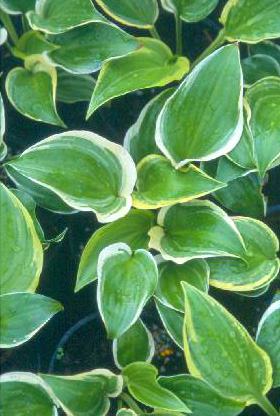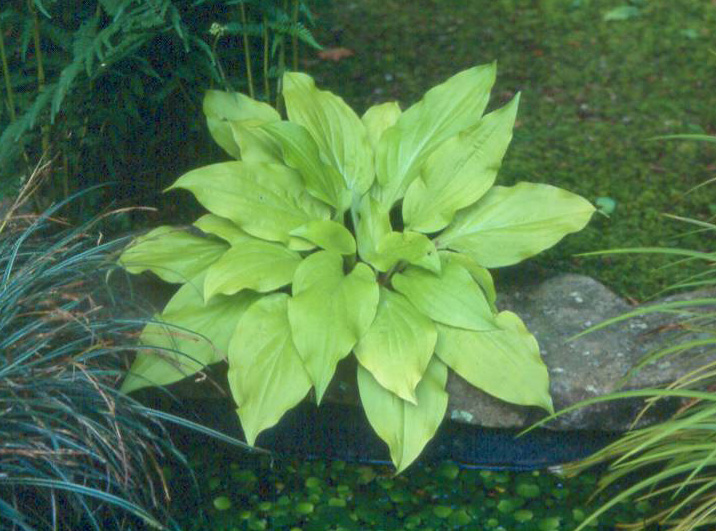Green Hill Hostas
New Hostas for the Wholesale and Retail Trade
 When the hosta folks start showing up at the nursery every spring, they always seem surprised that voles
(meadow mice) have devoured several large clumps of hostas in their garden. They claim that it is always the expensive ones that go first, but I know better: Voles are equal opportunity herbivores.
When the hosta folks start showing up at the nursery every spring, they always seem surprised that voles
(meadow mice) have devoured several large clumps of hostas in their garden. They claim that it is always the expensive ones that go first, but I know better: Voles are equal opportunity herbivores.
For many troubled gardeners, it is as if the little rodents had spontaneously generated in the garden over the winter.
In fact, voles start moving into the garden in late summer much like the mice who move into our basement. They are looking for winter housing and a ready supply of food for the two or three generations of ancestors they hope to procreate over the next several months. I believe a big fat hosta clump provides the perfect cover for them for the winter.

What to do: When the voles move in to the garden in the fall be as inhospitable as possible. Put out some poison right away when you see the first run. We put it down the hole and put a big rock over it to mimic a ‘Frances Williams’ crown and keep the opossums from stealing the bait. The runs will be easy to find as you rake or blow all the fallen leaves from the hosta beds. Removing the leaves will eliminate that protected highway system for the voles and force them to dig their own. If you must mulch, use a thin mulch of pine bark. It is hard for those voles to run under one layer of pine bark nuggets.
Look for vole runs along stone walls, house foundations and walls made of wooden cross ties. Voles like the extra cover to live under especially in the winter. These areas are also great sites to put vole feeding stations filled with poison. By the way, if all this poison talk is unsettling, try trapping. Place a mousetrap baited with apple or peanut butter under a heavy clay pot and put it over a hole or near the site of vole activity. You can catch one or more a day. You will also do a little population study and probably be amazed to find out how many of those little suckers are living under your hostas.

Hosta 'Sun Worshiper' (left)
Finally, the best time to locate where the voles are hiding in your garden is right after the snow starts to melt. Trapped under ground for months or minutes depending on how far North you live, voles are anxious to get out and have a nibble or two of something other than hosta crowns. They will make fresh exit holes and you can trap or poison them with good success at those locations. When spring finally comes, attack with vigor and drive the beasts from the garden. Garden cleanup by hand or with a leaf blower will reveal the runs and also which hostas may need immediate rescuing and repotting.
The key is to be vigilant year round and do not be afraid to kill a few voles. The alternative is removing the food source from the garden that they enjoy the most, and none of us can live without our hostas.